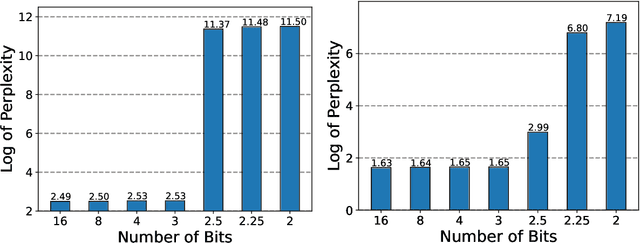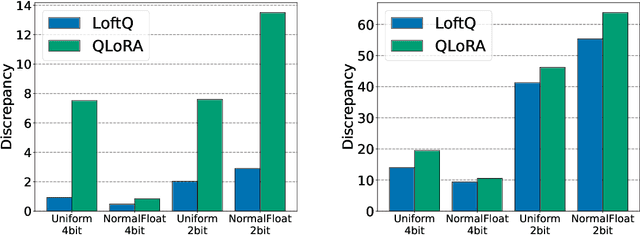Yifan Yu
Robust Filtering and Learning in State-Space Models: Skewness and Heavy Tails Via Asymmetric Laplace Distribution
Jul 30, 2025Abstract:State-space models are pivotal for dynamic system analysis but often struggle with outlier data that deviates from Gaussian distributions, frequently exhibiting skewness and heavy tails. This paper introduces a robust extension utilizing the asymmetric Laplace distribution, specifically tailored to capture these complex characteristics. We propose an efficient variational Bayes algorithm and a novel single-loop parameter estimation strategy, significantly enhancing the efficiency of the filtering, smoothing, and parameter estimation processes. Our comprehensive experiments demonstrate that our methods provide consistently robust performance across various noise settings without the need for manual hyperparameter adjustments. In stark contrast, existing models generally rely on specific noise conditions and necessitate extensive manual tuning. Moreover, our approach uses far fewer computational resources, thereby validating the model's effectiveness and underscoring its potential for practical applications in fields such as robust control and financial modeling.
Single-agent or Multi-agent Systems? Why Not Both?
May 23, 2025Abstract:Multi-agent systems (MAS) decompose complex tasks and delegate subtasks to different large language model (LLM) agents and tools. Prior studies have reported the superior accuracy performance of MAS across diverse domains, enabled by long-horizon context tracking and error correction through role-specific agents. However, the design and deployment of MAS incur higher complexity and runtime cost compared to single-agent systems (SAS). Meanwhile, frontier LLMs, such as OpenAI-o3 and Gemini-2.5-Pro, have rapidly advanced in long-context reasoning, memory retention, and tool usage, mitigating many limitations that originally motivated MAS designs. In this paper, we conduct an extensive empirical study comparing MAS and SAS across various popular agentic applications. We find that the benefits of MAS over SAS diminish as LLM capabilities improve, and we propose efficient mechanisms to pinpoint the error-prone agent in MAS. Furthermore, the performance discrepancy between MAS and SAS motivates our design of a hybrid agentic paradigm, request cascading between MAS and SAS, to improve both efficiency and capability. Our design improves accuracy by 1.1-12% while reducing deployment costs by up to 20% across various agentic applications.
Relative Pose Estimation through Affine Corrections of Monocular Depth Priors
Jan 09, 2025



Abstract:Monocular depth estimation (MDE) models have undergone significant advancements over recent years. Many MDE models aim to predict affine-invariant relative depth from monocular images, while recent developments in large-scale training and vision foundation models enable reasonable estimation of metric (absolute) depth. However, effectively leveraging these predictions for geometric vision tasks, in particular relative pose estimation, remains relatively under explored. While depths provide rich constraints for cross-view image alignment, the intrinsic noise and ambiguity from the monocular depth priors present practical challenges to improving upon classic keypoint-based solutions. In this paper, we develop three solvers for relative pose estimation that explicitly account for independent affine (scale and shift) ambiguities, covering both calibrated and uncalibrated conditions. We further propose a hybrid estimation pipeline that combines our proposed solvers with classic point-based solvers and epipolar constraints. We find that the affine correction modeling is beneficial to not only the relative depth priors but also, surprisingly, the ``metric" ones. Results across multiple datasets demonstrate large improvements of our approach over classic keypoint-based baselines and PnP-based solutions, under both calibrated and uncalibrated setups. We also show that our method improves consistently with different feature matchers and MDE models, and can further benefit from very recent advances on both modules. Code is available at https://github.com/MarkYu98/madpose.
Robust and Constrained Estimation of State-Space Models: A Majorization-Minimization Approach
Nov 18, 2024Abstract:In this paper, we present a novel optimization algorithm designed specifically for estimating state-space models to deal with heavy-tailed measurement noise and constraints. Our algorithm addresses two significant limitations found in existing approaches: susceptibility to measurement noise outliers and difficulties in incorporating constraints into state estimation. By formulating constrained state estimation as an optimization problem and employing the Majorization-Minimization (MM) approach, our framework provides a unified solution that enhances the robustness of the Kalman filter. Experimental results demonstrate high accuracy and computational efficiency achieved by our proposed approach, establishing it as a promising solution for robust and constrained state estimation in real-world applications.
Continual Novel Class Discovery via Feature Enhancement and Adaptation
May 10, 2024



Abstract:Continual Novel Class Discovery (CNCD) aims to continually discover novel classes without labels while maintaining the recognition capability for previously learned classes. The main challenges faced by CNCD include the feature-discrepancy problem, the inter-session confusion problem, etc. In this paper, we propose a novel Feature Enhancement and Adaptation method for the CNCD to tackle the above challenges, which consists of a guide-to-novel framework, a centroid-to-samples similarity constraint (CSS), and a boundary-aware prototype constraint (BAP). More specifically, the guide-to-novel framework is established to continually discover novel classes under the guidance of prior distribution. Afterward, the CSS is designed to constrain the relationship between centroid-to-samples similarities of different classes, thereby enhancing the distinctiveness of features among novel classes. Finally, the BAP is proposed to keep novel class features aware of the positions of other class prototypes during incremental sessions, and better adapt novel class features to the shared feature space. Experimental results on three benchmark datasets demonstrate the superiority of our method, especially in more challenging protocols with more incremental sessions.
Learning the Market: Sentiment-Based Ensemble Trading Agents
Feb 02, 2024



Abstract:We propose the integration of sentiment analysis and deep-reinforcement learning ensemble algorithms for stock trading, and design a strategy capable of dynamically altering its employed agent given concurrent market sentiment. In particular, we create a simple-yet-effective method for extracting news sentiment and combine this with general improvements upon existing works, resulting in automated trading agents that effectively consider both qualitative market factors and quantitative stock data. We show that our approach results in a strategy that is profitable, robust, and risk-minimal -- outperforming the traditional ensemble strategy as well as single agent algorithms and market metrics. Our findings determine that the conventional practice of switching ensemble agents every fixed-number of months is sub-optimal, and that a dynamic sentiment-based framework greatly unlocks additional performance within these agents. Furthermore, as we have designed our algorithm with simplicity and efficiency in mind, we hypothesize that the transition of our method from historical evaluation towards real-time trading with live data should be relatively simple.
LoftQ: LoRA-Fine-Tuning-Aware Quantization for Large Language Models
Oct 23, 2023



Abstract:Quantization is an indispensable technique for serving Large Language Models (LLMs) and has recently found its way into LoRA fine-tuning. In this work we focus on the scenario where quantization and LoRA fine-tuning are applied together on a pre-trained model. In such cases it is common to observe a consistent gap in the performance on downstream tasks between full fine-tuning and quantization plus LoRA fine-tuning approach. In response, we propose LoftQ (LoRA-Fine-Tuning-aware Quantization), a novel quantization framework that simultaneously quantizes an LLM and finds a proper low-rank initialization for LoRA fine-tuning. Such an initialization alleviates the discrepancy between the quantized and full-precision model and significantly improves the generalization in downstream tasks. We evaluate our method on natural language understanding, question answering, summarization, and natural language generation tasks. Experiments show that our method is highly effective and outperforms existing quantization methods, especially in the challenging 2-bit and 2/4-bit mixed precision regimes. We will release our code.
LoSparse: Structured Compression of Large Language Models based on Low-Rank and Sparse Approximation
Jun 26, 2023Abstract:Transformer models have achieved remarkable results in various natural language tasks, but they are often prohibitively large, requiring massive memories and computational resources. To reduce the size and complexity of these models, we propose LoSparse (Low-Rank and Sparse approximation), a novel model compression technique that approximates a weight matrix by the sum of a low-rank matrix and a sparse matrix. Our method combines the advantages of both low-rank approximations and pruning, while avoiding their limitations. Low-rank approximation compresses the coherent and expressive parts in neurons, while pruning removes the incoherent and non-expressive parts in neurons. Pruning enhances the diversity of low-rank approximations, and low-rank approximation prevents pruning from losing too many expressive neurons. We evaluate our method on natural language understanding, question answering, and natural language generation tasks. We show that it significantly outperforms existing compression methods.
GlueStick: Robust Image Matching by Sticking Points and Lines Together
Apr 04, 2023Abstract:Line segments are powerful features complementary to points. They offer structural cues, robust to drastic viewpoint and illumination changes, and can be present even in texture-less areas. However, describing and matching them is more challenging compared to points due to partial occlusions, lack of texture, or repetitiveness. This paper introduces a new matching paradigm, where points, lines, and their descriptors are unified into a single wireframe structure. We propose GlueStick, a deep matching Graph Neural Network (GNN) that takes two wireframes from different images and leverages the connectivity information between nodes to better glue them together. In addition to the increased efficiency brought by the joint matching, we also demonstrate a large boost of performance when leveraging the complementary nature of these two features in a single architecture. We show that our matching strategy outperforms the state-of-the-art approaches independently matching line segments and points for a wide variety of datasets and tasks. The code is available at https://github.com/cvg/GlueStick.
3D Line Mapping Revisited
Mar 30, 2023Abstract:In contrast to sparse keypoints, a handful of line segments can concisely encode the high-level scene layout, as they often delineate the main structural elements. In addition to offering strong geometric cues, they are also omnipresent in urban landscapes and indoor scenes. Despite their apparent advantages, current line-based reconstruction methods are far behind their point-based counterparts. In this paper we aim to close the gap by introducing LIMAP, a library for 3D line mapping that robustly and efficiently creates 3D line maps from multi-view imagery. This is achieved through revisiting the degeneracy problem of line triangulation, carefully crafted scoring and track building, and exploiting structural priors such as line coincidence, parallelism, and orthogonality. Our code integrates seamlessly with existing point-based Structure-from-Motion methods and can leverage their 3D points to further improve the line reconstruction. Furthermore, as a byproduct, the method is able to recover 3D association graphs between lines and points / vanishing points (VPs). In thorough experiments, we show that LIMAP significantly outperforms existing approaches for 3D line mapping. Our robust 3D line maps also open up new research directions. We show two example applications: visual localization and bundle adjustment, where integrating lines alongside points yields the best results. Code is available at https://github.com/cvg/limap.
 Add to Chrome
Add to Chrome Add to Firefox
Add to Firefox Add to Edge
Add to Edge